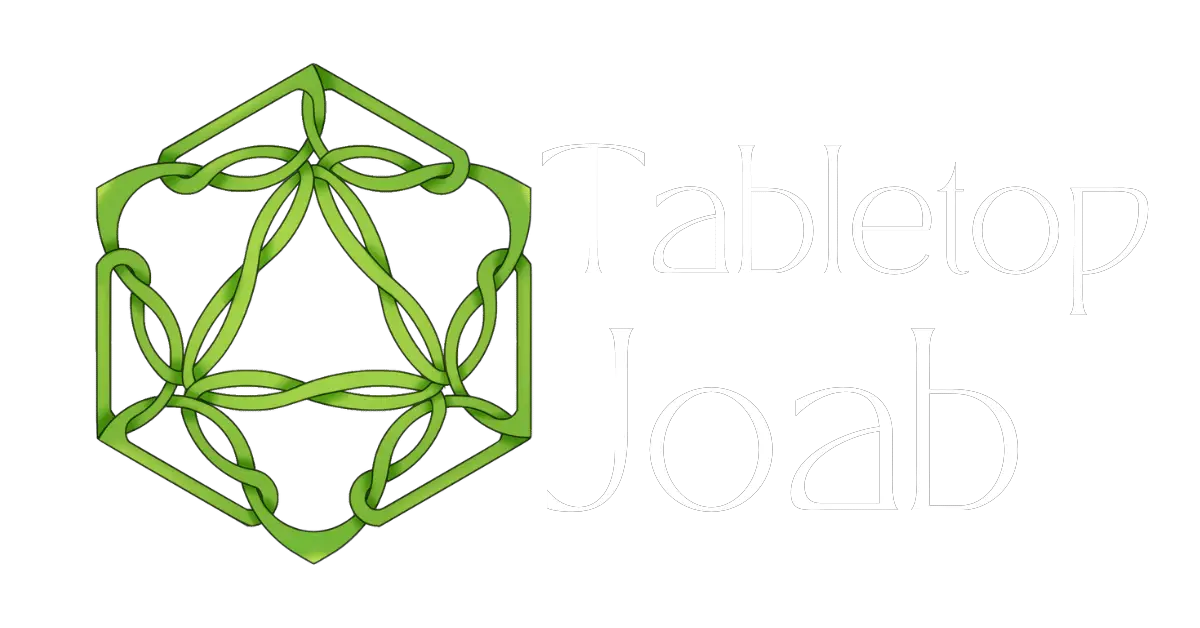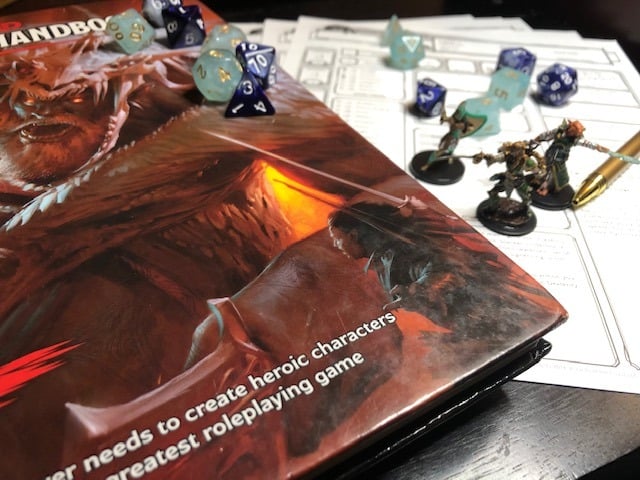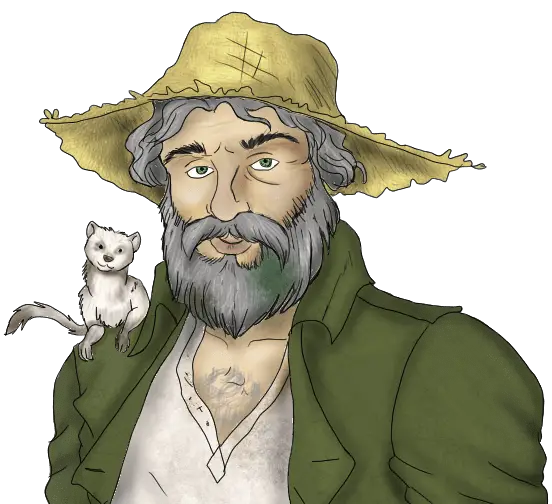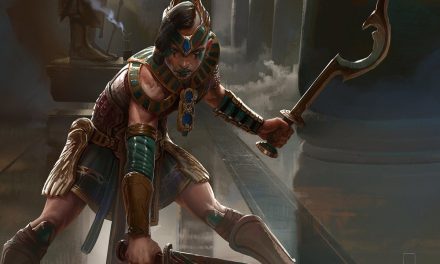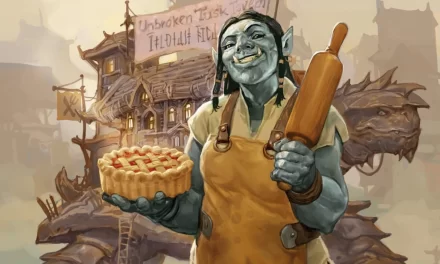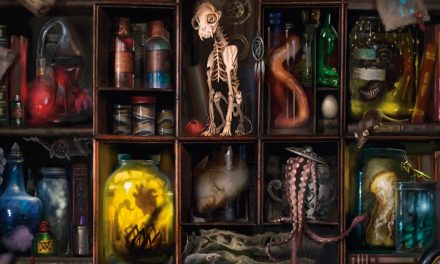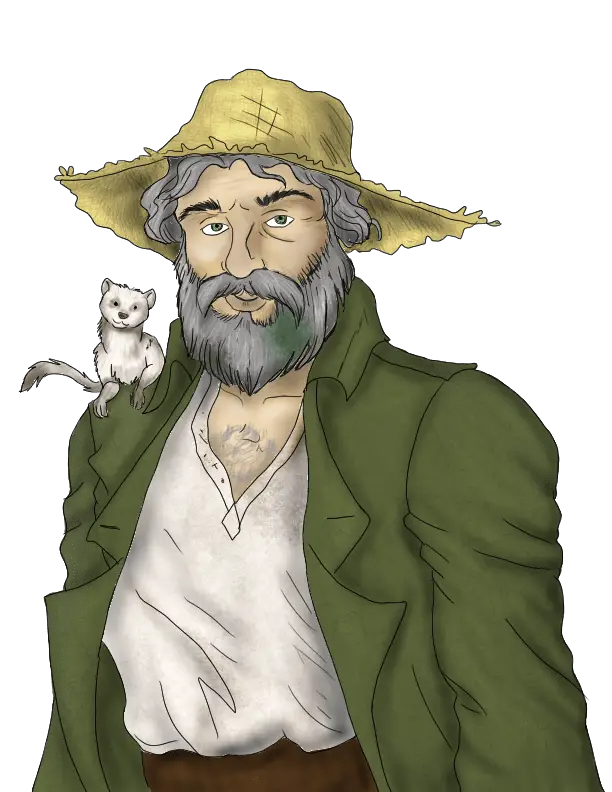If you’re new to Dungeons and Dragons, the process of making your first character can seem daunting.
Where do you start? What should you choose for your abilities and stats? How do you create a backstory that makes sense?
Don’t worry, we’re here to help!
In this article, we will walk you through the process step-by-step. By the time you finish reading, you’ll have everything you need to create a character that is ready for adventure!
What Do You Need to Make a D&D Character?
As a new D&D player, you’ll want to get a copy of the Player’s Handbook. It’s perfectly fine to borrow a copy from someone in your group at first, but you’ll eventually want to get a copy for yourself.
In the meantime, you can check out the basic rules for free on the official D&D website here. These include some basic options to get you started on your D&D journey, but you’ll still want to grab the PHB if you want all of the options available to you!
You can get character sheets from the official D&D site here. Additionally, they also have some pre-generated characters if you would like some extra inspiration!
If you prefer to make your D&D characters online, there are services to help you!
The most popular online character creator is D&D Beyond which I’ve started recently using myself. There’s a ton of features, but you will need to have your credit card handy to upgrade your subscription and purchase more content.
If you’d like an alternative, I’ve been using Hero Lab from Lone Wolf Development for the past 5 years. This is a good option if you don’t want a monthly subscription. New content takes some time to update since its created and uploaded by the community, but I do like the interface.
My favorite app for making characters is the 5th Edition Character Sheet app. You can get it for either Apple or Android. The app itself is free with the option to upgrade for only a couple of dollars. It’s simple but streamlined and very handy!
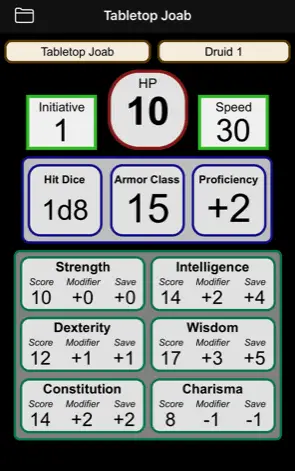
Start With a Concept
The first step in making a D&D character is to come up with a concept. What kind of hero do you want your character to be?
You can be anything like a brave knight, a mystical sorcerer, an intrepid explorer, or more! The sky is the limit! The most important thing (especially for your first character) is that your concept is clear and easy to work with.
Some example concepts include:
- A powerful wizard who harnesses the elements to control the battlefield
- A skilled archer who can take down enemies from a distance
- The valiant knight who protects those weaker than himself
- A sly rogue who uses her wits and agility to get out of danger
- An impulsive berserker who charges headlong into battle without a second thought
Additionally, don’t be afraid to borrow character concepts from books, TV shows, games, or other sources that you like. It’s one thing to watch a character like Indiana Jones do amazing things, but it’s another level of fun entirely to be able to BE Indiana Jones! As your game goes on, you’ll find new and interesting ways to add your own spin to the character.
If you come up with a concept for your character that you like before you start actually making them, it makes the process much easier!
Related: How to Read Your D&D 5e Character Sheet
Step 1: Choose Your Character’s Race
The next step is to choose your character’s race. They might be a Human, Dwarf, Elf, Gnome, or of some other fantastical heritage.
In D&D each race comes with its own strengths and special abilities as well as a unique look.
For example, Elves tend to be more quick and agile so they get a bonus to their Dexterity score. Meanwhile, Dwarves are very tough and hardy which means they get a bonus to their Constitution score.
Ultimately, play the character that you want to play. Just because Elves tend to be more light and dexterous doesn’t mean that you can’t be an Elven Barbarian who charges at enemies wielding a mighty axe!
For each race, there are various subraces. These provide extra bonuses and help you get more ideas for who your character is. Look for what seems the most interesting to you!
As a quick note, there are some alternative rules related to racial bonuses and character creation. I’ll cover these rules in a future article, but I’d like to keep things more simple and straightforward for now. If you’d like to use these rules, talk with your DM.
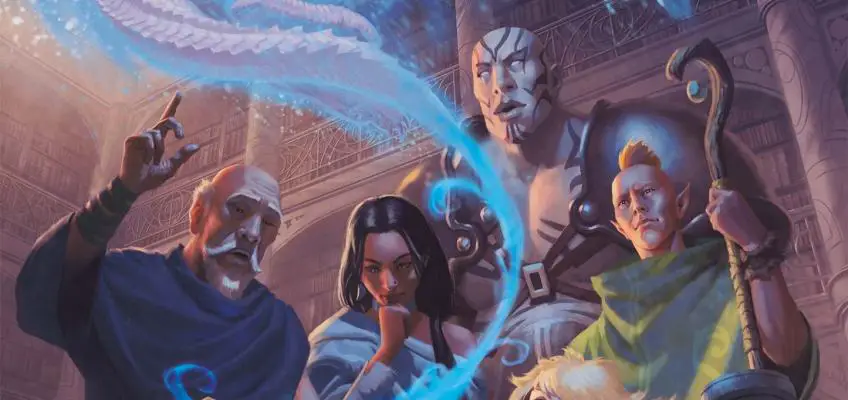
Step 2: Pick a Class!
Your character’s class determines what kind of abilities they have and what their role in the party is likely to be. You can also think of a character’s class as their “job.”
The class that you choose ultimately determines the most about how your character plays.
There are 13 classes in total. Each of these classes includes subclass options that come with their own special extra features and bonuses.
For now, let’s just keep it general though!
Do you want your character to be able to cast spells? Or would you rather they focus on using weapons and armor to defeat their enemies? Maybe they’re a jack-of-all trades who can do a little bit of everything?
It’s good practice to consider the party’s composition when making your character, but don’t sweat it too hard. Ultimately, it’s more about playing the character that you want to play than it is trying to create an “optimized” party. Adventures await no matter what!
You’re sure to find the perfect class for you! If you aren’t sure how a concept that you’re wanting to base a character around would work as a class, don’t hesitate to work with your Dungeon Master to find something that works.
Related: D&D Dice Explained! (What Each Is and How To Read Them!)
Step 3: Ability Scores
Next, we’re going to fill out your character’s ability scores.
Ability scores are a measure of how well a character can do certain things related to that ability.
There are six ability scores: Strength, Dexterity, Constitution, Intelligence, Wisdom, and Charisma.
Each class relies on different abilities more than others. For example, a fighter will need a high Strength score to be able to wield the heaviest of weapons while a Wizard will need a high Intelligence score to be able to cast spells.
There are several ways to determine your ability scores. The most common options are: Rolling dice, Standard Array, and Point Buy.
Check with your Dungeon Master to see which method your group is using.
You can also check out my article that covers 5 different ways to determine your ability scores!
You’ll want to put your highest score in the ability that is most important to your class. Put scores that are lower in abilities that aren’t as important for your class (these are also called “dump stats.”)
It’s okay to have abilities that your character is not so good at. In fact, that’s what makes it so important for your party to work as a team!
For example, a Barbarian will want to have a high Strength score so that they can deal a lot of damage when they attack. A high Constitution score is important too so that they have plenty of hit points.
While the Barbarian is amazing in combat, they might choose to make Intelligence and Charisma their “dump stats.” They may not be charming or bright, but I don’t think anyone will say that to their face!
When looking at your chosen class in the Player’s Handbook, it will tell you what that class’s most important abilities are.
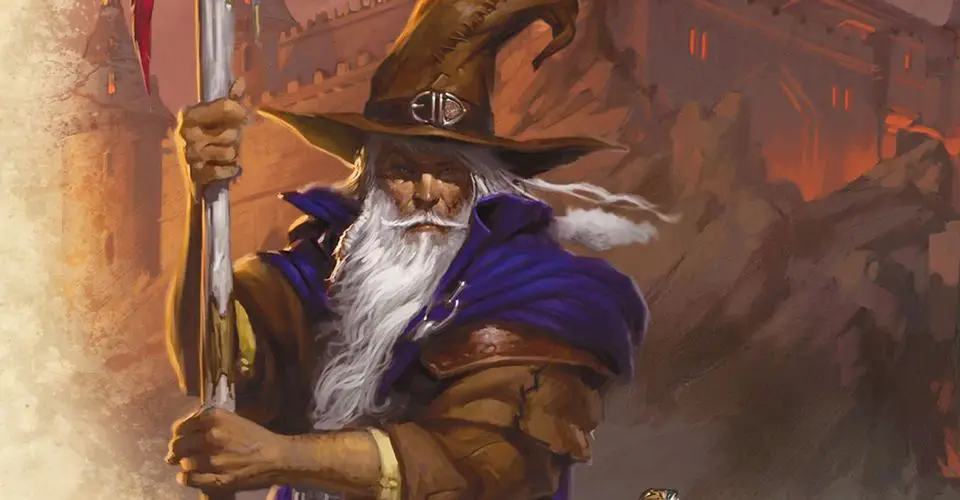
Step 4: Character Information
Now that you have your character’s race, class, and ability scores, it’s time to bring them to life. Think of everything up to this point as making a character outline. Now is where you can really fill that in and make the character your own!
Specifically, you need your character’s name, physical description, personality, alignment, and background.
Let’s take a closer look at those.
You Might Like: Your Game Won’t Be Like Critical Role (and That’s a Good Thing!)
Name
It’s often said that “a rose by any other name would smell as sweet.” However, I don’t think that that works quite as well here.
Your character’s name is the first step in making them “real.” Up to this point, they were a race, class, and collection of ability scores.
Now they’re real. As far as your game world is concerned, they’re a living, breathing person!
It can be easy to get overwhelmed when trying to think of names for your D&D character, but don’t stress it!
There are some great name generators online that are great for helping come up with a character name. This is one of my favorites that has helped me on many occasions!
Physical Description
What does your character look like?
This can be anything from their hair/eye color and build to what kind of clothes they wear.
Don’t forget to include any scars, tattoos, or other distinguishing features your character might have!
Think about how your character sees themselves and how others see them. Do they care about their appearance or do they not really give it much thought?
It’s very likely that one of the first things you’ll do when you start playing your first game of D&D is describe your character to everyone at the table. Taking some time to really imagine what they look like is a great way to make an excellent first impression with your new adventuring party!
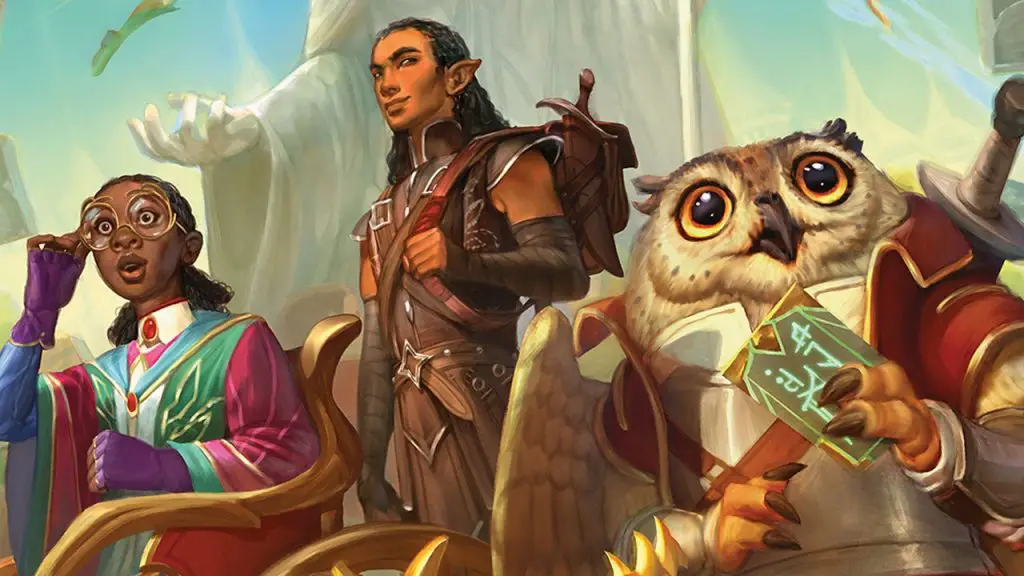
Personality
Your character’s personality is what makes them truly unique. It’s everything from how they talk to their friends to how they react in various situations.
Do they like to take risks or do they play it safe? Are they kind and compassionate or are they more of a loner?
This is your chance to really make the character your own and have some fun with it!
We’ll talk about character backgrounds in a moment, but each background includes ideas for each of these characteristics that are relevant for that background. Even if you don’t use these, they’re a good starting point!
Characters have four personality characteristics: two Personality Traits, an Ideal, a Bond, and a Flaw.
Personality traits are exactly what they sound like: aspects of your personality based on your experiences and view of the world.
Your Ideal is the thing that drives your character. This ties in heavily with their alignment (which we’ll also get to in just a moment.)
A character’s Bond is the thing that connects your character to the game world. These are people, places, and events that have had a significant effect on the character and likely explain why they are adventuring.
Lastly, a character’s Flaw is some type of weakness or vice they have. The Cleric might have a tendency to judge others too harshly or the Wizard might tend to come off as an arrogant know-it-all.
More often than not, a character’s flaws are what really make scenes interesting.
Think about how those traits might manifest in various situations.
For example, if a character is stubborn, would they continue to try and solve a problem even when everyone else has given up? That might be good in some situations but other times it might make them resistant to trying new approaches to solving a problem.
Having a list of personality traits helps you stay in character during the game and makes it more fun.
Also Check Out: The ONE Question To Make Better Characters!
Alignment
Now we consider your character’s alignment.
Alignment is a reflection of a character’s moral and ethical beliefs. It’s important to consider what your character’s alignment is because it will affect how they interact with the world and the other characters in it.
There are nine possible alignments in D&D:
- LG – Lawful Good
- LN – Lawful Neutral
- LE – Lawful Evil
- NG – Neutral Good
- N – True Neutral
- NE – Neutral Evil
- CG – Chaotic Good
- CN – Chaotic Neutral
- CE – Chaotic Evil
Unless you’re specifically playing a game in which the party are meant to be the bad guys, avoid Evil alignments. After all, you’re supposed to be the heroes!
I wrote a different article that covers each of these alignments in more detail. You can check that out here!
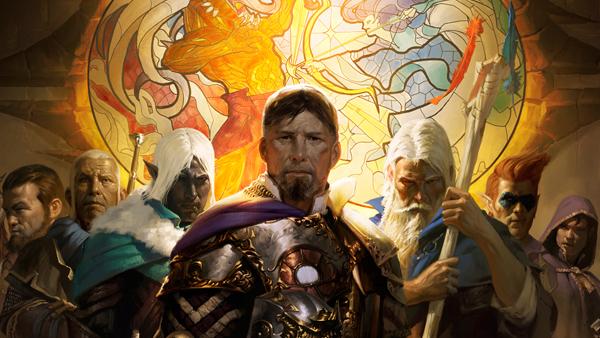
Background
Everybody has a past and your character is no different!
Your character’s background is where they come from. This determines certain aspects of your character like their bonus skill proficiencies, extra languages, and starting equipment.
Each background also gets extra features that give you new ways to interact with the world.
For example, a Noble will have no problem mingling with high society and commoners will be more inclined to accommodate them. Meanwhile, an Urchin is an expert at passing through the hustle and bustle of a city and can lead their group through a city at twice the normal speed.
There’s way too many backgrounds available to cover here, but you can find them starting on page 125 of the Player’s Handbook.
Step 5: Starting Equipment
If you want to strike out as an adventurer, you’re going to need some gear!
The starting equipment for your character is determined by their class and background. This includes things like weapons, armor, and adventuring gear. Weapons are how characters deal damage in melee combat and armor contribute to your Armor Class which helps you to not get hit so easily.
Alternatively, you can instead buy your starting equipment yourself. The amount of gold you have to do this is based on your class.
| Class | Starting Gold |
| Artificer | 5d4 x 10 |
| Barbarian | 2d4 x 10 |
| Bard | 5d4 x 10 |
| Cleric | 5d4 x 10 |
| Druid | 2d4 x 10 |
| Fighter | 5d4 x 10 |
| Monk | 5d4 |
| Paladin | 5d4 x 10 |
| Ranger | 5d4 x 10 |
| Rogue | 4d4 x 10 |
| Sorcerer | 3d4 x 10 |
| Warlock | 4d4 x 10 |
| Wizard | 4d4 x 10 |
Note that some classes have restrictions on what kinds of weapons and armor they are proficient in.
For example, Sorcerers and Wizards don’t have proficiency with any Armor and can only effectively use a small selection of simple weapons like daggers and quarterstaffs.
On the other hand, a Paladin can wear any armor and use all but the most exotic of weapons without having to get extra training.
When you’re getting your gear, you’ll also want to doublecheck your class’s features to make sure there are no conflicts. Barbarians may have proficiency with light and medium armor, but wearing it conflicts with their Unarmored Defense feature.
As for miscellaneous supplies, a quick option is to just grab an equipment pack. These include everything you could need depending on the pack you choose.
The packs and their contents can be found next to the adventuring gear on page 151 of the PHB.
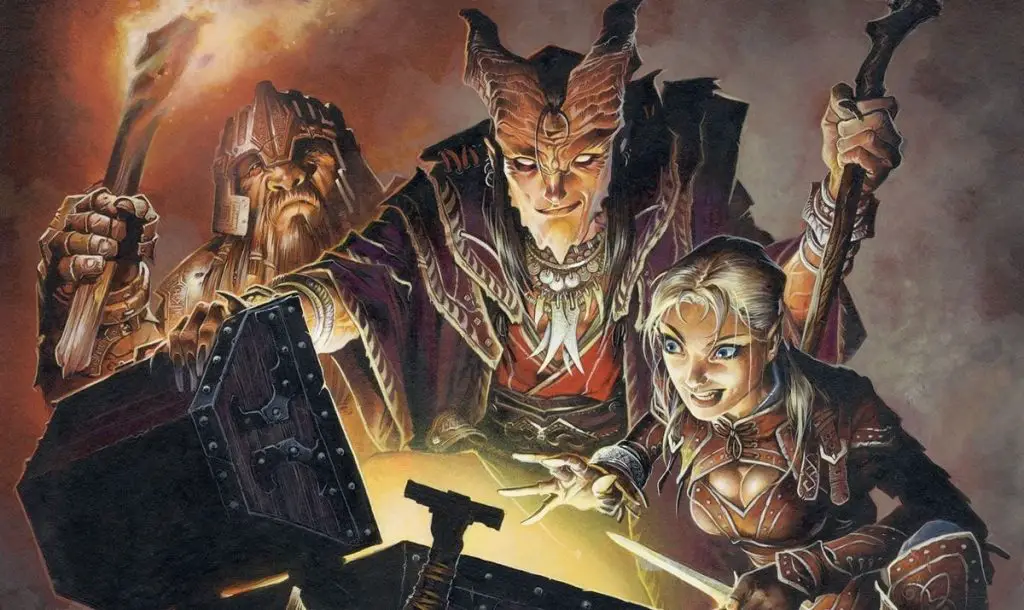
Step 6: Your Story Thus Far
Once your D&D character has been created, you want to tie your character to the rest of the party.
What has brought the party together? Do they know the other characters? What are their immediate and long-term goals and how does this adventure further that?
If nothing else, this step should ideally be done with the group as a “session zero.” You can learn more about session zero and what that means here.
Figuring out what’s bringing the party together and kicking off the adventure is an especially fun step. It’s thankfully made even easier if the party has some idea of what kind of adventures await them. I’d recommend checking out my list of the best adventures for new players if your group wants to dive in to an adventure but doesn’t want to pick one that’s too intense for beginners!
Conclusion
Creating your first D&D character can be a daunting task. But with this step-by-step guide, you’ll have everything you need to make a character that is fun and engaging for the entire party.
Consider your character’s alignment, background, and starting equipment as you create them. Make sure to tie your character into the story of the party. With a little bit of planning, you’ll have a character that is ready for any adventure.
Once you’ve got your character figured out, all that’s left to do is jump into the game and have fun!
I’m currently working on creating in-depth guides for every subclass and class in D&D 5e. You can check out the one’s I’ve currently published by class here.
To keep updated with the latest guides, news, tips, and more for D&D, sign up for my newsletter below!
Still got questions about making your first D&D character or want to share a cool concept you’re working on? Let’s chat in the comments!
